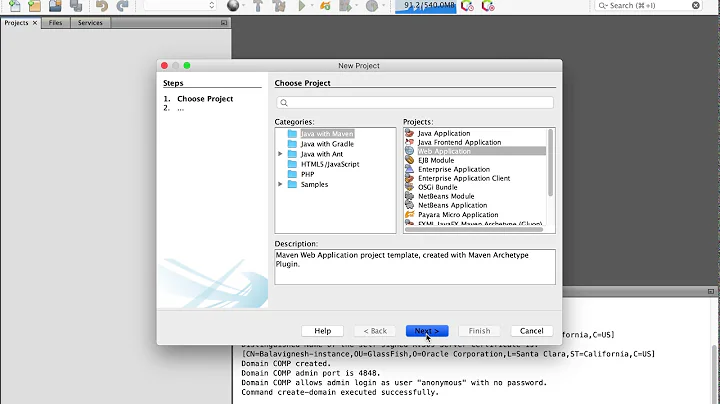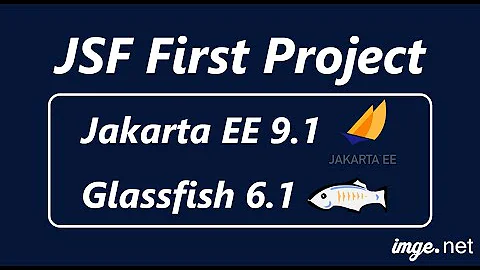Real world comparisons of Glassfish and JBoss 5?
Solution 1
A number of things from my own experience:
- GlassFish has much better administration console (JBoss has three consoles, each of them far from being ideal).
- Hot deployment is more reliable on GlassFish
- JMS works better on GlassFish - this applies to GF vs. JBoss 4.X. As far as I see the JMS implementation was drastically modified in JBoss 5.X, so maybe this claim is no longer true
- WebServices are working better on GlassFish, I had a number of issues with more advanced configuration on JBoss
- GlassFish has more super-high-end entrprise add-ons, like HA-Database, that stores user session on a cluster in Database, not in memory, so the full failover is possible, whatever disaster would happen
- JBoss is more much popular, there are a lot of administrators, developers, who know it, so it is easier to find someone, who can develop on JBoss, there are also more resources in the net. Sometimes this is more important, then technical superiority of one solution over another.
- GlassFish is friendlier for developers. Redeployment of the web application on GF 3 lasts more or less one second - in oreder to achieve this kind of speed of redeployment for JBoss I need JRebel. In addition, if someone is using NetBeans, there is a number of smart wizards, that are very helpful.
- The future of GlassFish is not certain because of the acquisition of SUN by Oracle. Right now Oracle claims it will support it, but who knows how this support will look like and how long will it last. Even though GlassFish is open source, hardly anyone is ready to develop application server for his/her own needs...
From my point of view GF is easier to administer, is a better solution from purely technological point of view, but it is far less popular and has uncertain future.
I am not connected in any way with RedHat/JBoss or SUN/GlassFish, my company (erudis.pl) is supporting and developing for both servers.
Solution 2
(disclaimer: I work at Sun and I am in the GF team)
I agree that Seam works fine on GlassFish; see https://blogs.oracle.com/theaquarium/tags/seam
GFv3 is quite different than JBoss 5; in particular:
- GFv3 is based on OSGi while JBoss 5's kernel is based on JMX.
- GFv3 supports JavaEE 6; JBoss 5 supports Java EE 5.
GFv3 is designed to be very modular; services start on demand, there is an update center repository, etc. GFv3 is significantly smaller than JBoss 5 and will start much faster. JBoss 5.1 GA is listed as 130MB; GFv3Preview is 50MB. GFv3 starts in a couple of seconds; JBoss in tens (you should try the startup for your own platform).
There are other differences, some inherited from GlassFish v2 like the graphical admin console, or the admin CLI.
A more direct comparison for JBoss 5 would be the GlassFish v2 releases, which are based on Java EE 5. The latest release in that family is GFv2.1, with a GFv2.1.1 release scheduled in October (see https://blogs.oracle.com/theaquarium/entry/schedule_for_glassfish_v2_1).
Sun also provides patch releases of GlassFish (akin to RedHat's support for JBoss); see https://blogs.oracle.com/glassfishforbusiness and sun.com/glassfish.
Solution 3
It's strictly what you're used to. I found configuring and using JBoss to be about as pleasing as trying to shave with a jagged spoon while riding a unicycle with no seat. Glassfish however, just seems to work.
Solution 4
My choice is Glassfish: it is faster to start-up, to deploy web applications. the Admin console is very accurate, moreover it is both graphical and command-line. Now it is fully-supported by Oracle, its future is not uncertain any more. It is based upon OSGi: it is really modular. You can install Spring-osgi applications easly. You can freely choice between Eclipse Link , Apache Open JPA and Hibernate without pain. It is greatly integrated in NetBeans (and, of course, Eclipse).
On the other hand, Jboss is more widespread and thus it is easy to find job on it (IMHO because it is an old App Server; glassfish is relatively new).
Solution 5
I started developing a Seam application on JBoss and after a few months tried to get it working on Glassfish. I found the Glassfish enviroment very counterintuitive. I had to fix some strange errors on GF and I could not find any information on the web so after a few days I gave up and went back to JBoss. So personally I would not recommend Glassfish.
Related videos on Youtube
Comments
-
caseyamcl about 4 years
Does anyone have experiences with both in the real world? How do they compare in terms of performance (memory usage, speed, etc)? Stability?
Does JBoss Seam work well on Glassfish?
-
Hendy Irawan over 13 yearsplease, rephrase the question as comparing between EITHER: Glassfish 2 vs JBoss 5, ....or.... Glassfish 3 vs JBoss 6.
-
-
skaffman over 14 yearsYour comparisons are disingenuous. (1) The JBoss5 kernel is not JMX based (JBoss 4 was, not 5). (2) JBoss is also modular, you pick which modules you want. The configurations it ships with are just starting points. (3) Startup time depends which config you pick, it varies from around 3 seconds for a minimal config, to a minute or ttwo for the bells-and-whistles config.
-
 matbrgz almost 14 years@Pelegi, can you mention just one thing that JBoss does better than Glassfish?
matbrgz almost 14 years@Pelegi, can you mention just one thing that JBoss does better than Glassfish?











